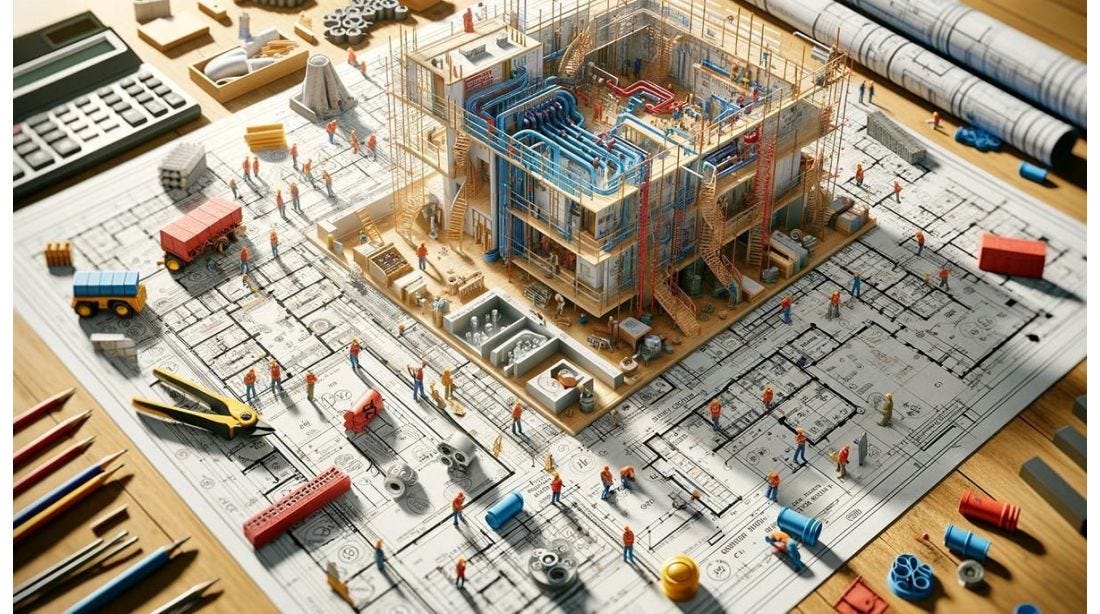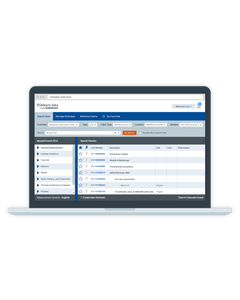CSI MasterFormat is a standard for organizing construction information into a logical and consistent format. It helps architects, engineers and contractors to communicate effectively and efficiently during all phases of a construction project. In this guide, we will explain everything you need to know about CSI MasterFormat and how to use it in your construction projects.
What is CSI MasterFormat?
CSI MasterFormat is a tool that helps professionals in the construction industry to organize and communicate information about construction projects. It is a standard for organizing construction information published by the Construction Specifications Institute (CSI). CSI MasterFormat consists of a list of numbers and titles organized into 50 divisions, covering all aspects of construction projects.
How Does CSI MasterFormat Work?
CSI MasterFormat is organized into 50 divisions. Each division represents a different aspect of construction, such as concrete, masonry or electrical. Within each division, there are further subcategories that provide more specific information. For example, Division 05 - Metals includes subcategories such as structural metal framing, metal decking and ornamental metal. These subdivisions provide even more specific information about each division, making it easier to find and use relevant information in construction projects. By using this standardized system, construction professionals can communicate more seamlessly. Also, it can allow for easy browsing in your construction cost estimating software.
| Division | Title | Subdivisions |
|---|---|---|
| 1 | General Requirements | - |
| 2 | Existing Conditions | - |
| 3 | Concrete | Cast-in-Place Concrete, Precast Concrete, Cast-in-Place Concrete, Structural Framing, Precast Structural Concrete, Concrete Finishing, Concrete Accessories, Concrete Reinforcement |
| 4 | Masonry | Masonry Units and Accessories, Masonry Mortaring, Stone Masonry, Manufactured Stone Masonry |
| 5 | Metals | Structural Metal Framing, Metal Decking, Cold-Formed Metal Framing, Metal Fabrications, Metal Railings, Ornamental Metal, Metal Stairs |
| 6 | Wood, Plastics, and Composites | Rough Carpentry, Sheathing, Wood Decking, Structural Plastics, Finish Carpentry, Architectural Woodwork, Composite Fabrications |
| 7 | Thermal and Moisture Protection | Dampproofing and Waterproofing, Thermal Insulation, Fire and Smoke Protection, Joint Sealants, Expansion Control |
| 8 | Openings | Hollow Metal Doors and Frames, Wood Doors, Plastic Doors, Hardware, Glazing, Storefronts, Curtain Walls |
| 9 | Finishes | Plaster and Gypsum Board, Tile, Terrazzo, Flooring, Wall Finishes, Ceilings, Stucco |
| 10 | Specialties | Information Specialties, Fire Protection Specialties, Security and Safety Specialties, Postal Specialties |
| 11 | Equipment | Vehicle and Pedestrian Equipment, Loading Dock Equipment, Detention Equipment, Theater and Stage Equipment |
| 12 | Furnishings | Furniture, Furnishings, Accessories |
| 13 | Special Construction | Special Purpose Rooms, Special Structures, Integrated Construction |
| 14 | Conveying Equipment | Elevators, Escalators, Moving Walks, Lifts |
| 21 | Fire Suppression | Sprinkler Systems, Fire Suppression, Standpipes, Fire Pumps |
| 22 | Plumbing | Plumbing Equipment, Plumbing Fixtures, Facility Water Distribution, Facility Sewerage and Drainage |
| 23 | Heating, Ventilating, and Air Conditioning (HVAC) | HVAC Equipment, HVAC Air Distribution, HVAC Fans and Blowers, HVAC Air Cleaning Devices |
| 25 | Integrated Automation | Integrated Automation Instrumentation and Terminal Devices, Integrated Automation Control Network |
| 26 | Electrical | Electrical Service, Electrical Power Generation, Electrical Power Transmission, Electrical Distribution, Electrical Wiring and Raceways, Electrical Equipment |
| 27 | Communications | Structured Cabling, Distributed Communications and Monitoring Systems |
| 28 | Electronic Safety and Security | Electronic Safety and Security Equipment, Electronic Access Control and Intrusion Detection |
| 31 | Earthwork | Earth Moving, Excavating, Grading, Waterway Excavation and Containment |
| 32 | Exterior Improvements | Exterior Improvements, Exterior Protection |
| 33 | Utilities | Utilities, Water Utility Distribution, Electrical Utility Transmission and Distribution, Gas and Vapor Utility Distribution |
| 34 | Transportation | Transportation Signaling and Control Equipment, Transportation Equipment |
| 35 | Waterway and Marine Construction | Waterway Construction and Equipment, Marine Construction and Equipment |
| 40 | Process Interconnections | Process Integration, Process Instrumentation |
| 41 | Material Processing and Handling Equipment | Material Processing and Handling Equipment |
| 42 | Process Heating, Cooling, and Drying Equipment | Process Heating Equipment, Process Cooling Equipment, Process Drying Equipment |
| 43 | Process Gas and Liquid Handling, Purification, and Storage | Process Gas Handling Equipment, Process Liquid Handling Equipment, Process Purification Equipment, Process Gas and Liquid Storage |
| 44 | Pollution and Waste Control Equipment | Pollution and Waste Control Equipment |
| 45 | Industry-Specific Manufacturing Equipment | Industry-Specific Manufacturing Equipment |
| 46 | Water and Wastewater Equipment | Water and Wastewater Equipment |
| 48 | Electrical Power Generation | Electrical Power Generation Equipment |
| 49 | Electrical Transmission and Distribution | Electrical Transmission and Distribution Equipment |
| 50 | Specialized Construction | Specialized Construction |
The Benefits of CSI MasterFormat
Using CSI MasterFormat has many benefits for construction professionals. It provides a standardized way of organizing construction information, making it easier to find and use. It also helps ensure that everyone involved in a project is using the same terminology and information, reducing the risk of miscommunication. Additionally, using CSI MasterFormat can save time and money by streamlining the construction process.
Common Misconceptions about CSI MasterFormat
One common misconception about CSI MasterFormat is that it is only useful for architects and engineers. In reality, construction cost estimators can also benefit greatly from using CSI MasterFormat.
Another misconception is that CSI MasterFormat is too rigid and inflexible. While it is true that CSI MasterFormat has a standardized structure, it is also designed to be adaptable to different types of projects and construction methods.
Benefits of Using CSI MasterFormat
CSI MasterFormat has several benefits for construction professionals, including:
- Consistency: CSI MasterFormat provides a consistent and standardized format for organizing construction information, making it easier to communicate and share information between project stakeholders.
- Efficiency: CSI MasterFormat helps professionals to quickly locate and access the information they need, saving time and reducing errors.
- Clarity: CSI MasterFormat makes it easier to understand the scope of work for each project, ensuring that everyone is on the same page.
- Compliance: CSI MasterFormat helps professionals to ensure that their construction documents and specifications comply with industry standards and regulations.
Using CSI MasterFormat can help ensure that all relevant information is included in construction cost estimates, reducing the risk of oversights or errors.
Challenges With CSI MasterFormat
While CSI MasterFormat has many benefits, there are also some challenges associated with using it. One challenge is that it can be difficult to learn and use effectively, especially for those who are new to the construction industry. Additionally, CSI MasterFormat is not always updated to reflect changes in the industry, which can make it less relevant for certain types of projects.
Overall, CSI MasterFormat is a valuable tool for architects, engineers and contractors working on construction projects. It provides a standardized format for organizing construction information, making communication more efficient and effective. By understanding the numbering system and organization of the 50 divisions, professionals can use CSI MasterFormat to save time, reduce errors and ensure compliance with industry standards and regulations.








